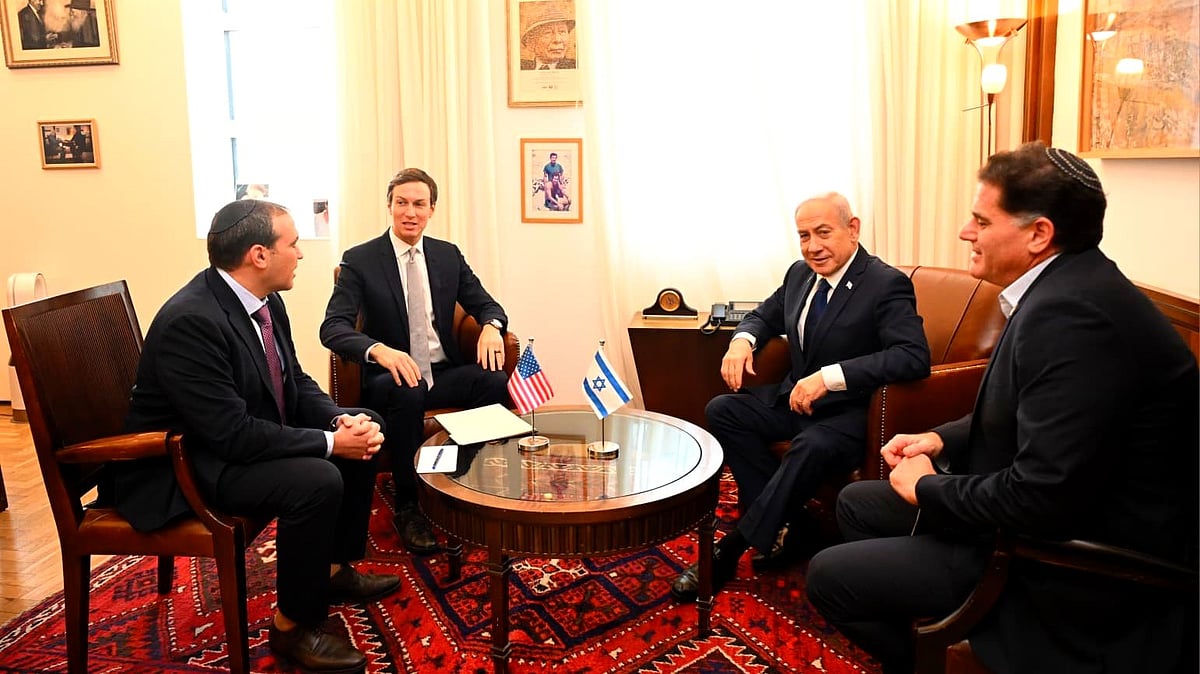World
Israel returns bodies of 15 Palestinians as Kushner meets Netanyahu to push Gaza ceasefire
Ceasefire’s first stage, now nearing its end, has so far held tenuously, recalling earlier efforts that unravelled, notably in January

Israel on Monday handed over the remains of 15 Palestinians to Gaza, marking another cautious step in a fragile, US-brokered ceasefire effort. The transfer came just a day after Palestinian militants returned the body of an Israeli hostage, furthering a sequence of limited exchanges designed to sustain the uneasy truce.
With this latest exchange, only four bodies of Israeli hostages are believed to remain in Gaza.
The development coincided with a high-level visit by Jared Kushner — senior adviser and son-in-law to US President Donald Trump — who met Israeli Prime Minister Benjamin Netanyahu in Jerusalem to review the next stages of the agreement. A photograph of the two men, released by Netanyahu’s office, underscored the diplomatic symbolism of Kushner’s re-emergence as a mediator in a deal that remains fraught with uncertainty.
The ceasefire’s first stage, now nearing its end, has so far held tenuously. It recalls earlier efforts that unravelled, notably in January this year, when a temporary truce collapsed soon after a prisoner–hostage exchange. That breakdown led to a renewed Israeli air campaign over Gaza, with mediators unable to secure progress on two of the most contentious issues — the withdrawal of Israeli troops and the establishment of a viable governing authority for the enclave.
Those same obstacles loom large once again. The second phase of the current plan calls for forming a joint administrative council for Gaza and deploying an international stabilisation force to oversee the transition. Neither the composition of such a body nor the identity of the countries willing to contribute troops has been clarified.
Latest exchange of bodies
The Palestinian health ministry in Gaza said the International Committee of the Red Cross handed over the remains of the 15 Palestinians on Monday, bringing the total number of bodies received since the ceasefire began to 315.
Published: undefined
For every Israeli hostage returned, Israel has been releasing the remains of 15 Palestinians — a ratio that has stirred both quiet resentment and cautious gratitude among grieving families on both sides.
Officials in Gaza said only 91 of the returned bodies have been identified so far. The process has been slowed by a severe shortage of DNA testing kits and other forensic tools, a consequence of Israel’s blockade and the devastation of Gaza’s medical infrastructure. To aid identification, the ministry has been uploading photographs of the deceased to its website, hoping relatives can recognise missing loved ones.
The exchange followed Israel’s confirmation on Sunday that it had finally recovered the remains of Hadar Goldin — an Israeli soldier killed during the 2014 Gaza war, just two hours after a ceasefire took effect. Goldin’s death, and the long campaign by his family to retrieve his body, had become a deeply emotional issue in Israel. The 23-year-old lieutenant’s relatives marked 4,000 days earlier this year since his remains were taken into Gaza.
Israel’s military had long concluded that Goldin was killed in action, based on evidence found in the tunnel where his body was hidden — including his bloodstained shirt and prayer fringes. His was the last set of remains from before the current conflict still held in Gaza, closing a chapter that had haunted the Israeli public for over a decade.
The war itself was triggered by Hamas’s deadly 7 October 2023 assault on southern Israel, which killed some 1,200 people, mostly civilians, and saw 251 kidnapped. Since then, Gaza’s health ministry — part of the Hamas-run administration — has reported at least 69,176 Palestinian deaths, a figure that international monitors have not independently verified but generally regard as credible in scale.
Published: undefined
US envoy seeks to steady truce talks
The meeting between Kushner and Netanyahu was shrouded in some secrecy, with neither side offering immediate details. Israeli strategic affairs minister Ron Dermer was also present. Kushner, a key architect of Washington’s 20-point peace and reconstruction framework, was reportedly in the region to ensure the ceasefire’s fragile first phase does not collapse under political strain.
That phase, which came into effect on 10 October, centres on halting active hostilities, securing the release of all hostages, and facilitating large-scale humanitarian aid into Gaza — particularly medical and food supplies.
However, the second phase remains nebulous. It is expected to include the demobilisation and disarmament of Hamas fighters, the introduction of an international security force, and the formation of a new governing authority in Gaza — goals that remain far from being realised.
According to a source familiar with the talks, speaking on condition of anonymity, Kushner is also involved in parallel negotiations to arrange safe passage for an estimated 150–200 Hamas militants currently trapped in the so-called 'yellow zone' — a heavily monitored buffer area under Israeli control. In return, the fighters would be required to surrender their weapons following the repatriation of Goldin’s remains.
Hamas has made no public comment on that proposal, though the group has acknowledged that intermittent clashes continue in the same area.
For now, the uneasy calm holds. But with both sides entrenched in old grievances and new uncertainties, the fragile ceasefire — much like those before it — remains less a peace and more a pause between wars.
With AP/PTI inputs
Published: undefined
Follow us on: Facebook, Twitter, Google News, Instagram
Join our official telegram channel (@nationalherald) and stay updated with the latest headlines
Published: undefined